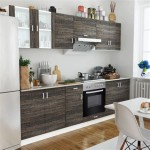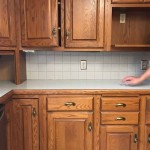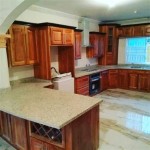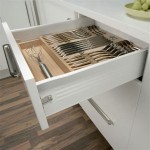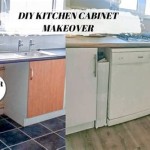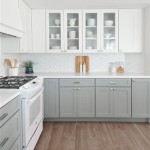Kitchen Cabinet Crown Mold: Essential Aspects
Kitchen cabinet crown molding, a decorative element atop kitchen cabinets, serves as a transition between the tops of cabinets and the ceiling, providing an elegant and cohesive finish to any kitchen design. Understanding the essential aspects of crown molding is crucial for selecting the ideal molding that complements both your kitchen's aesthetics and functionality.
This comprehensive guide will delve into the core aspects to consider when choosing kitchen cabinet crown molding, helping you make an informed decision and elevate the visual appeal of your kitchen space.
1. Material Selection
The choice of material for your crown molding significantly impacts its durability, longevity, and aesthetic appeal. Popular materials include:
- Wood: Timeless and versatile, offering a natural and sophisticated look. However, it requires regular maintenance.
- MDF (Medium-Density Fiberboard): A budget-friendly option with customizable finishes, but less durable than wood.
- Polyurethane: Lightweight, durable, and resistant to moisture and insects, making it ideal for kitchens.
- PVC (Polyvinyl Chloride): Similar to polyurethane, PVC is moisture-resistant and versatile.
2. Profile Design
The profile design refers to the shape and detailing of the molding. Choose a profile that complements the architectural style of your kitchen. Common profiles include:
- Ogee: A classic and elegant profile with a curved upper portion and a straight lower portion.
- Cove: A subtle and understated profile with a concave shape.
- Crown: A more elaborate profile featuring a series of curves and angles, adding a touch of grandeur.
- Dentil: A traditional profile characterized by a series of small, square blocks.
3. Size and Proportion
The size and proportion of the crown molding should be carefully considered. Larger moldings can create a more dramatic effect, while smaller moldings can provide a more subtle accent. The ideal size depends on the height of your cabinets and the overall size of your kitchen.
4. Color and Finish
The color and finish of the crown molding should complement the kitchen cabinets and the overall color scheme. Matching the crown molding to the cabinet color can create a cohesive look, while contrasting colors can add a touch of interest.
5. Installation
Proper installation is essential for ensuring the longevity and appearance of your crown molding. Crown molding can be installed using nails or adhesive, depending on the type of material and the surface it is being installed on.
Conclusion
Kitchen cabinet crown molding is an essential element that can enhance the aesthetics and functionality of your kitchen space. By considering the material selection, profile design, size, color, and finish, you can choose a molding that complements your kitchen's style and creates a visually appealing and cohesive look.

3 Ways To Enhance Your Kitchen With Crown Molding

Adding Crown Molding To Kitchen Cabinets Young House Love

3 Ways To Enhance Your Kitchen With Crown Molding

Crown Moulding The Recently Rediscovered Kitchen Solution

Diy Kitchen Cabinet Upgrade With Paint And Crown Molding

Decorative Molding Timberlake Cabinetry

Crown Molding For Shaker Kitchen Cabinets

Cabinet Crown Molding Rogue Engineer

Faq Crown Molding For Cabinets Dura Supreme Cabinetry

Kitchen Design Details Learn About Crown Molding On Cabinetry
Related Posts


